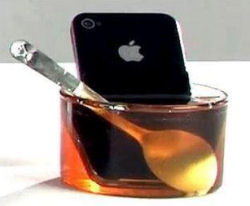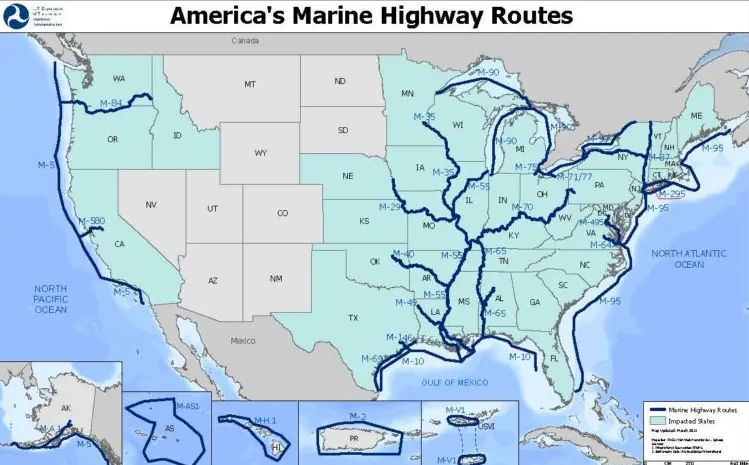 We have a timeshare in Kaanapali Hawaii. I mention that because we rarely go there; normally we swap the time to stay someplace in driving distance of Los Angeles. I did that recently, spending a week at the Jockey Club in Las Vegas. The facility has an interesting history. Built in 1974 before the big building boom, it was built as a condominium (one of the first on the strip), and originally had a restaurant, high end shops, tennis courts, and plans for a casino. In 1977, they started selling timeshares. In 2004, they sold the undeveloped land and surface parking lot to a group that, after some ownership change, built the Cosmopolitan. But the Jockey Club remains, surrounded on three sides, because it will be impossible to get 14,000 owners (condos and timeshare) to ever agree on selling the buildings. It will ever be this outpost of 1980s Vegas surrounded by a town that has grown and changed around it.
We have a timeshare in Kaanapali Hawaii. I mention that because we rarely go there; normally we swap the time to stay someplace in driving distance of Los Angeles. I did that recently, spending a week at the Jockey Club in Las Vegas. The facility has an interesting history. Built in 1974 before the big building boom, it was built as a condominium (one of the first on the strip), and originally had a restaurant, high end shops, tennis courts, and plans for a casino. In 1977, they started selling timeshares. In 2004, they sold the undeveloped land and surface parking lot to a group that, after some ownership change, built the Cosmopolitan. But the Jockey Club remains, surrounded on three sides, because it will be impossible to get 14,000 owners (condos and timeshare) to ever agree on selling the buildings. It will ever be this outpost of 1980s Vegas surrounded by a town that has grown and changed around it.
I found the history of the Jockey Club interesting because one of my many hobbies is the history of Las Vegas. When we think of Las Vegas, what comes to mind is the Vegas of the late 1950s to perhaps 1980: the Vegas of neon signs on the strip. The Vegas of headliners and lounges. The Vegas with showgirls. The Vegas with name hotels like the Frontier, Sands, Flamingo, Sahara, Thunderbird, Dunes, Desert Inn. The Vegas of the Rat Pack. That Swingin’ town. The Vegas where the people had class, and dressed up. Oh, and the mob and Howard Hughes.
That Vegas is dead. That Vegas was built on hotels that had personality, that were built with an acceptable scale. They were different, each with their own character. They had unique signs, and unique people and stories behind them. But today that’s not the case. They are all massive boxes with no architectural character, and as you move from one to the next you often can’t tell you are in a different hotel. It doesn’t make that much of a difference, because they are owned by the same corporation. Rooms are the same. The pools and restaurants all feel the same. The signs are all large TV screens. “Residencies” are in massive arenas, and shows are pulsing rock music — often in rooms leased to the promoters and not programmed by the hotel. The Vegas is 2020 is nothing like the Vegas of 1960.
But as a student of history on vacation, I asked: What is left of the old Vegas. I knew the structures that were left. The answer was “not much”. There are some two story garden wings left at the Tropicana. There’s the casino at Circus Circus (circus building). There are the bones of the towers at the Sahara or Westgate (International). In terms of structure, that’s it. Although the names of the Flamingo and Caesars and Sahara live on, none of the original buildings, in their original form, are there. As for the signs? The oldest signs left (excluding Fremont Street) are the Flamingo sign (dating to 1970) and the Circus Circus clown (late 1960s). That’s it. Not much of the old town. Want the neon. Go to the museum. The only part of old Vegas that remains is the racism under the surface.
ETA: Here are two good resources that sent me down a fun rabbit hole: (1) Mountain West Digital Library: Historical Maps of Las Vegas; (2) Historical Maps at NDOT. UNLV also has some great digital collections.
Being a highway guy, I decided to see if I could drive and find the old Vegas. I went out W Bonanza looking for evidence of the famed Moulin Rogue. There’s nothing. An empty lot across from the LVRJ space. I could only figure it out from the mural. I went S and W out old 95: Fremont St, Charleston, Boulder Highway. The Showboat is gone, to be replaced by apartments. The big casinos near Henderson are new. You could only tell the old highway by the remaining motor courts and used car lots, many of which are derelict. The few of those that remained on old 91, by the way, are being killed by the highway work being done on LV Blvd by the City of Las Vegas. There are remnants of the neon, but not much.
I tried to imagine what my parents or grandparents saw driving into the town. I have only vague memories of that time, coming out for a Shriners Convention at the Aladdin in the mid 1970s. Vast expanses of desert. Billboards for Foxy’s Deli. SIgns with the headliners. All gone. Even the Stuckey’s by the side of the road are gone.
Do I enjoy Vegas today? To some extent, but more to explore the history and the art. The casinos are just a room; the gambling of no interest other than the math and people watching. The shows tend to be “meh”: certainly not the nice dinner shows of old.
What is it to gain a resort, and lose its soul?



 Rosh Hashanah, the Jewish New Year, starts at sundown tomorrow (Tuesday) night, September 7th. Thus, it’s time for my annual New Years message for my family, my real-life, Blog, Dreamwidth, Google+, Tumblr, Twitter, and Facebook friends (including all the new ones I have made this year), and all other readers of my journal:
Rosh Hashanah, the Jewish New Year, starts at sundown tomorrow (Tuesday) night, September 7th. Thus, it’s time for my annual New Years message for my family, my real-life, Blog, Dreamwidth, Google+, Tumblr, Twitter, and Facebook friends (including all the new ones I have made this year), and all other readers of my journal: Another traditional food is a
Another traditional food is a 
 Added information on
Added information on